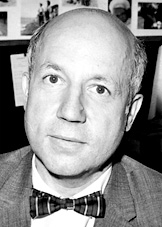Melvin Calvin
- Birthdate
- 1911/04/08
- Birthplace
- St. Paul, MN, USA
- Fields of study
- Bioengineering
Biography
Melvin Calvin was born in St. Paul, Minnesota, April 8, 1911, of Russian emigrant parents. He received the B.S. degree in Chemistry in 1931 at the Michigan College of Mining and Technology, and the Ph.D. degree in Chemistry from the University of Minnesota in 1935. He spent the academic years 1935-1937 at the University of Manchester, England. He began his academic career at the University of California at Berkeley in 1937, as an instructor, and has been a full professor since 1947. He has served as Director of the big-organic chemistry group in the Lawrence Radiation Laboratory since 1946. This group became the Laboratory of Chemical Biodynamics in 1960.
He has been the recipient of a number of medals, awards, and lectureships, and holds membership in numerous learned societies. In addition, he has been elected to the National Academy of Sciences, the American Philosophical Society, the American Academy of Arts and Sciences, the Royal Society of London, the Royal Netherlands Academy of Sciences and Letters, and the German Academy of Scientists, Leopoldina. He holds honorary D.Sc. degrees from Michigan College of Mining and Technology, the University of Nottingham, Oxford University, and Northwestern University.
His scientific life began with a thesis on the electron affinity of halogens, done under the direction of Professor George A. Glocker at the University of Minnesota and completed in 1935. The following two-year postdoctoral period was spent with Professor Michael Polanyi at the University of Manchester, at which time his interest in coordination catalysis, particularly metalloporphyrins, was awakened. This interest is still paramount and has resulted both in theoretical (The Chemistry of Metal Chelate Compounds) and practical (oxygen-carrying synthetic chelate compounds) applications. The investigation of the electronic, photoelectric and photochemical behaviour of such materials now occupies a good fraction of his time.
Upon coming to Berkeley, California, at the invitation of Professor Gilbert N. Lewis, his interest turned to general theoretical aspects of organic molecular structure and behaviour.There were two prime publications of this period. The first, with Professor Gilbert N. Lewis, was on The Color of Organic Substances, and the second, with Professor G.E.K. Branch, was The Theory of Organic Chemistry. It was from these men that the fundamental interest in the behaviour of organic molecules in their most detailed terms was derived.
This interest combined with the earlier one on the catalytic behaviour of coordination compounds were the natural parents of his present preoccupation with the problem of photosynthesis. The ready availability of carbon-14 which began in 1945 channeled the early work to development of techniques for its use (Isotopic Carbon) and its application to the exploration of photosynthetic carbon dioxide reduction (The Path of Carbon in Photosynthesis).
An extension of his interest from here into the general problems of biology was unavoidable, and thus his laboratory is at present peopled by emigrants from all areas of science on both sides of chemistry - physics on the one hand and biology on the other.
Dr. Calvin is married to the former Genevieve Jemtegaard, daughter of Norwegian emigrant parents, they have two daughters, Elin and Karole, and one son, Noel.
Larson Collection Interview
